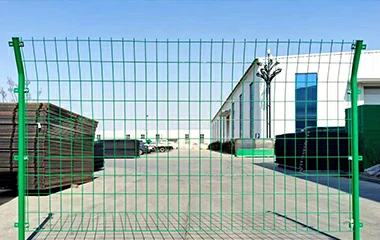 TEL:
+86-13102802206
TEL:
+86-13102802206
 Email:
fencenetting@china.com
Email:
fencenetting@china.com
 Language
Language
 TEL:
+86-13102802206
TEL:
+86-13102802206
 Email:
fencenetting@china.com
Email:
fencenetting@china.com
 Language
Language


Building a gabion wall is an increasingly popular choice for both functional and aesthetic landscaping solutions. Gabion walls are made from wire mesh cages filled with natural stones, providing excellent drainage, structural stability, and an appealing organic look. This article will guide you through the steps to construct your own gabion wall.
Step 1 Planning and Design
Before you start building, it’s essential to plan your gabion wall’s location, size, and purpose. Consider whether the wall will serve as a retaining wall, a decorative feature, or a boundary marker. Measure the area where you want the wall, and sketch a design that incorporates the dimensions and shapes of the gabion cages. It is also crucial to check your local building codes for any regulations related to wall construction.
Step 2 Gathering Materials
Next, you will need to gather materials. The primary components of a gabion wall include wire mesh cages (gabions), stones (fill material), and tools for assembly. You can purchase pre-made gabion cages at home improvement stores, or you can create your own using heavy-gauge wire mesh. For fill material, select stones that fit well within the cages, offering both strength and visual appeal. Avoid using round stones, as they may not pack well and could compromise the wall's integrity.
Step 3 Preparing the Foundation
A solid foundation is crucial for the stability of your gabion wall. Start by leveling the ground where the wall will be placed. Depending on the height and load of the wall, you may need to excavate a trench roughly 6 inches deep to provide extra stability. After leveling, add a layer of gravel at the bottom of the trench to enhance drainage.

Step 4 Assembling the Gabion Cages
Once your foundation is prepared, begin assembling the gabion cages. If you are using pre-made cages, simply place them in the desired location. If you are constructing your own, shape the wire mesh into a box and secure the corners with wire ties.
Step 5 Filling the Cages
After placing the cages, begin filling them with the selected stones, ensuring they are packed tightly to avoid shifting. Use larger stones at the bottom and smaller stones at the top for a stable and visually appealing finish.
Step 6 Finishing Touches
Once filled, secure the top lid of the gabion cage using wire ties. You can also add vegetation or decorative elements around the wall for an enhanced aesthetic appeal.
In conclusion, building a gabion wall can be a rewarding DIY project that combines practical functionality with natural beauty, allowing you to enhance your landscape while managing soil erosion and water runoff effectively.